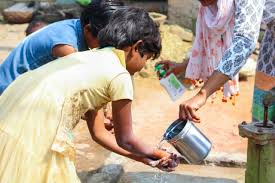Asia, with its diverse cultures, breathtaking landscapes, and rich history, offers an array of exciting destinations for family vacations. However, traveling with children requires additional preparation to ensure safety and a stress-free experience. In 2024, as travel continues to evolve, it’s essential for families to stay informed about safety tips and best practices. This comprehensive guide provides essential travel safety tips for families visiting Asia, helping you navigate your adventure with confidence.
1. Research Your Destination Thoroughly

Before embarking on your journey, research your destination to familiarize yourself with local customs, safety concerns, and health recommendations.
1.1. Understand Local Customs and Laws
Each Asian country has its unique customs and legal requirements. Understanding local customs, traditions, and etiquette can help you avoid cultural misunderstandings. Additionally, familiarize yourself with local laws, especially regarding health and safety regulations, to ensure compliance.
1.2. Check Travel Advisories
Consult travel advisories from reliable sources such as your government’s foreign affairs department or embassy. These advisories provide updated information on safety, health concerns, and potential risks.
2. Health and Vaccinations
Ensuring the health of your family is a top priority when traveling. Vaccinations and health precautions play a crucial role in preventing illness.
2.1. Consult a Travel Health Specialist
Visit a travel health clinic or consult a specialist to discuss recommended vaccinations and health precautions based on your destination. Common vaccinations for Asia may include hepatitis A and B, typhoid, and Japanese encephalitis.
2.2. Pack a Medical Kit
Carry a medical kit with essential medications, including those for common ailments such as diarrhea, motion sickness, and minor injuries. Include items like insect repellent, sunscreen, and a thermometer. Be sure to pack any prescription medications in their original containers with a copy of the prescription.
3. Safety Precautions for Children
Traveling with children requires extra attention to ensure their safety throughout the trip.
3.1. Keep Important Information Handy
Equip your children with identification details such as a card or bracelet with your contact information, hotel address, and any allergies or medical conditions. Ensure they understand basic safety rules and what to do if they get lost.
3.2. Childproof Your Accommodation
Upon arrival, inspect your accommodation for potential hazards. Secure sharp objects, lock away cleaning supplies, and ensure windows and balconies are safe for children. Consider using childproofing products such as outlet covers and corner protectors.
4. Safe Transportation
Transportation safety is crucial for a smooth and secure journey.
4.1. Choose Reputable Transportation Providers
Use reputable transportation services for airport transfers and local travel. Avoid unlicensed taxis and opt for ride-hailing apps with good reviews. Verify the safety standards of any transportation providers and ensure child car seats are available if needed.
4.2. Follow Local Traffic Laws
Familiarize yourself with local traffic rules and regulations. In many Asian countries, traffic conditions can be chaotic, so exercise caution when crossing streets and use pedestrian crossings. Always supervise your children near traffic.
5. Food and Water Safety

Food and water safety are critical to avoid gastrointestinal issues and other health problems.
5.1. Choose Safe Dining Options
Opt for reputable restaurants and food vendors with good hygiene practices. Avoid street food if you are unsure of the vendor’s cleanliness. Encourage your family to drink bottled or purified water and avoid ice, which may be made from contaminated water.
5.2. Be Cautious with Food
Introduce your family to new foods gradually and be mindful of potential allergens. Ensure that food is cooked thoroughly and served hot to minimize the risk of foodborne illnesses.
6. Personal Safety and Security
Maintaining personal safety and security is essential for a worry-free travel experience.
6.1. Use Secure Accommodations
Select accommodations with good security measures, such as 24-hour reception, secure locks, and in-room safes. Check online reviews for insights into the safety of the property.
6.2. Keep Valuables Safe
Keep valuables such as passports, money, and electronics secure at all times. Use a money belt or a secure bag and avoid displaying expensive items publicly. Keep a copy of important documents in case of loss or theft.
7. Emergency Preparedness
Being prepared for emergencies is crucial when traveling abroad.
7.1. Know Emergency Contacts
Familiarize yourself with local emergency numbers for police, medical services, and fire departments. Locate the nearest embassy or consulate in case of emergencies or legal issues.
7.2. Have a Contingency Plan
Create a contingency plan for unexpected situations such as medical emergencies, natural disasters, or lost passports. Ensure everyone in the family knows the plan and understands how to react in different scenarios.
8. Respect Local Customs and Cultures
Respecting local customs and cultures enhances your travel experience and promotes positive interactions.
8.1. Dress Appropriately
Dress modestly and respectfully according to local customs, especially when visiting religious sites or rural areas. Understanding and adhering to dress codes demonstrates cultural sensitivity.
8.2. Learn Basic Local Phrases
Learning a few basic phrases in the local language can facilitate communication and show respect to the local population. Simple greetings and expressions of thanks can go a long way in fostering goodwill.
9. Technology and Connectivity
Staying connected and using technology wisely can enhance your travel experience and safety.
9.1. Use Mobile Apps
Download useful travel apps for navigation, translation, and emergency services. Apps such as maps, language translators, and local guides can assist you in navigating unfamiliar areas.
9.2. Stay Connected
Ensure your mobile phone plan includes international coverage or consider purchasing a local SIM card for data and communication. Staying connected allows you to access information, keep in touch with family, and navigate efficiently.
10. Enjoy Your Trip Responsibly

While focusing on safety, remember to enjoy the diverse experiences that Asia has to offer. Explore the rich cultural heritage, sample local cuisine, and engage in activities that interest your family.
10.1. Plan Family-Friendly Activities
Choose activities and attractions suitable for all family members. Many destinations in Asia offer family-friendly options such as theme parks, nature reserves, and cultural experiences.
10.2. Be Flexible
Traveling with children requires flexibility. Be prepared for changes in plans and adapt to your family’s needs. Allow for downtime and relaxation to ensure everyone enjoys the trip.
Conclusion
Traveling with family to Asia in 2024 can be a rewarding and memorable experience with proper planning and attention to safety. By researching your destination, preparing for health and safety concerns, and respecting local customs, you can ensure a smooth and enjoyable trip. Prioritize your family’s well-being, stay informed about the latest travel updates, and embrace the adventure with confidence. Safe travels!



